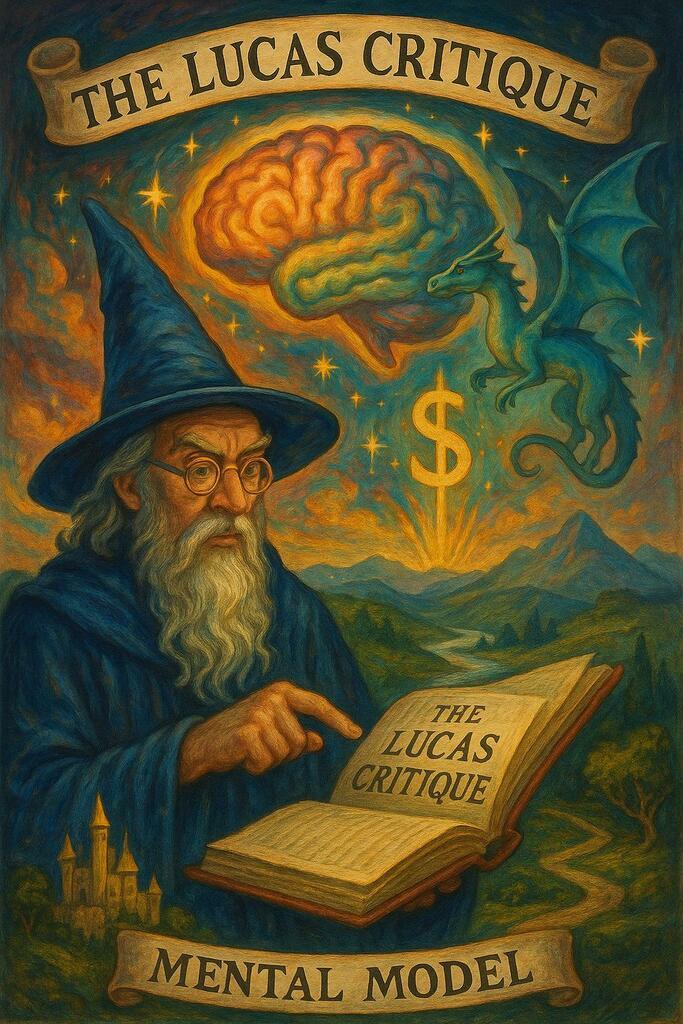Have you ever wondered why some economic policies fail to deliver the results experts predict? In 1976, economist Robert Lucas asked the same question. The Lucas critique mental model challenges the assumption that economic relationships stay fixed after policy changes.
His groundbreaking paper, “Econometric Policy Evaluation: A Critique”, revealed a critical flaw in how we analyze policies. He argued that people’s expectations and decisions change when policies do—meaning old models can’t predict future outcomes.
Imagine a government cuts taxes to boost spending. Traditional models might assume everyone reacts the same way. But Lucas showed that real people adapt. If they expect future tax hikes, they might save instead of spend. This shift in behavior breaks the old rules—and the model’s predictions.
This idea reshaped economics. Before Lucas, many assumed relationships between variables like interest rates and inflation stayed fixed. Now, we know better. Modern tools like DSGE models build micro-level behavior into their frameworks. They account for how workers, businesses, and investors think ahead.
Why does this matter to you? Whether it’s your savings or a nation’s economy, decisions hinge on anticipating change. The Lucas Critique mental model teaches us to ask: “Are we missing how policies alter the game itself?”
Key Takeaways
- Lucas critique mental model: challenges the assumption that economic relationships stay fixed after policy changes.
- People’s expectations and behavior adapt, making traditional models unreliable for predicting outcomes.
- Robert Lucas’s 1976 paper revolutionized macroeconomics by emphasizing forward-thinking analysis.
- Modern economic models now incorporate how individuals and businesses adjust to new policies.
- Understanding this concept helps explain why some policies succeed while others backfire.
The Lucas Critique Mental Model and Its Relevance

Picture this: It’s 1975. Gas prices triple. Inflation hits 12%. Unemployment soars. Yet economists keep using the same tools to predict outcomes. Why did their policy evaluation methods fail? The answer lies in a revolutionary paper that changed how we view decision-making.
When Old Rules Stopped Working
Before the 1970s, many experts believed in fixed relationships between things like jobs and prices. The Phillips Curve, for example, suggested lowering unemployment would always raise inflation. But when both spiked simultaneously, this theory collapsed. Workers and businesses had adapted their expectations—they anticipated price hikes and demanded higher wages upfront.
New Tools for New Realities
Modern models now bake human adaptability into their calculations. Here’s how approaches shifted:
| Aspect | Pre-1970s Approach | Post-Lucas Approach |
|---|---|---|
| Policy Assumptions | “People won’t change habits” | “Everyone recalculates choices” |
| Data Usage | Historical patterns only | Behavioral forecasts |
| Example | Fixed interest rate effects | How rate announcements alter spending |
This shows why today’s analysts track Twitter trends and CEO surveys. When the Fed hints at rate changes, families adjust budgets before policies take effect. That’s the power of understanding microfoundations—how small decisions shape big systems.
Next time you hear a economic debate, ask: Are they accounting for how we might outsmart their predictions?
The Genesis of the Lucas Critique Mental Model

What happens when an entire decade defies economic rules? The 1970s saw prices rise alongside joblessness—a paradox older theories couldn’t explain. Enter Robert Lucas, a University of Chicago economist who reshaped how we study policy effects. His work grew from fiery debates between Milton Friedman and Edmund Phelps about why expectations matter in economics.
Friedman-Phelps and the Natural Rate
Friedman and Phelps argued that workers adapt to inflation fears. If prices rise 5% this year, they’ll demand 6% raises next year. Traditional models ignored this adaptability. Lucas realized these oversights made predictions useless when policies changed. Coefficients in equations—like how unemployment affects inflation—weren’t fixed. They shifted as people learned.
Breaking the 1970s Stalemate
Consider a government trying to cut unemployment through stimulus. Old models assumed a stable trade-off between jobs and inflation. But when workers anticipate the plan, they negotiate higher wages upfront. Suddenly, the stimulus sparks price hikes instead of hiring. This structural instability became central to Lucas’s 1976 paper.
His insight? Economic relationships depend on human forecasts. If a tax cut today signals debt tomorrow, savers adjust instantly. Have you noticed how mortgage rates jump before the Fed even acts? That’s expectations rewriting the rules—exactly what Lucas warned us about.
Behind The Lucas Critique Mental Model

Why do new tax laws sometimes backfire? Or why do interest rate hikes occasionally boost spending instead of slowing it? The answers lie in two key ideas: structural instability and how people anticipate the future.
Structural Instability in Economic Models
Imagine your favorite coffee shop raises prices. Regulars might switch to homemade brew. That’s structural instability—relationships between variables (like price and demand) shift when conditions change. In economics, this means a tax cut today could lead to more savings instead of spending if people expect higher taxes tomorrow.
Old models treated these connections as fixed. But reality? Workers bargain for raises before inflation hits. Homebuyers lock mortgage rates when they hear rumors of policy shifts. These behavioral changes break traditional forecasts.
Static vs. Dynamic Expectations
Static thinking assumes people won’t adapt. Like believing a 2% interest rate hike will always reduce borrowing. Dynamic expectations recognize that humans learn. If the Fed announces six rate increases over two years, families might cut spending immediately—not wait for the first hike.
Here’s the kicker: Modern models now bake this adaptability into their math. They track how announcements alter decisions, not just final policy changes. Ever noticed gas prices jump before holiday weekends? That’s expectations rewriting the rules.
Have you seen plans fail because people outsmarted the system? Maybe a store discount led to hoarding instead of loyalty. The core idea remains: When rules change, so do we. And that’s why today’s economists treat human foresight as their biggest variable.
The Lucas Critique Mental Model Explained
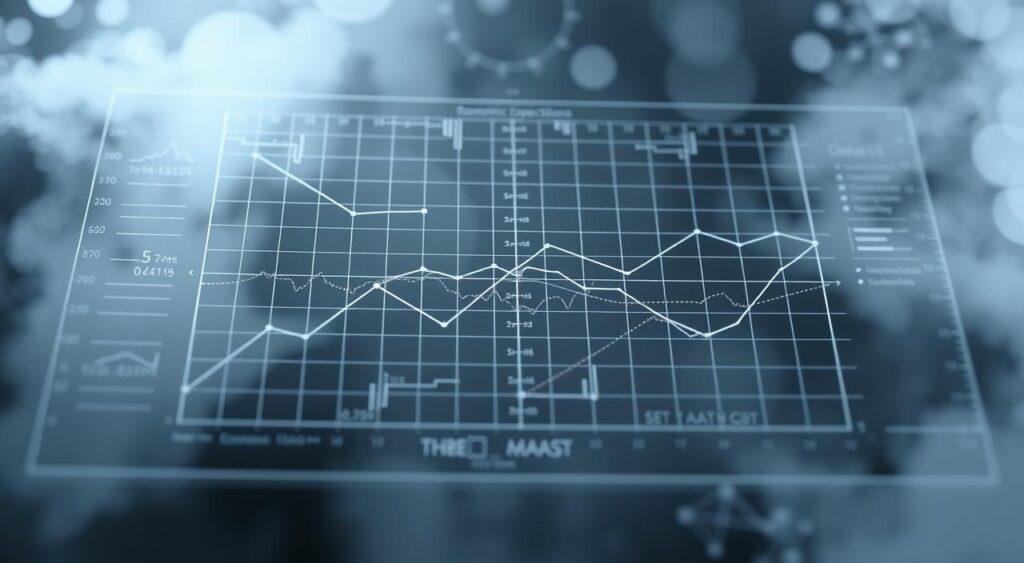
Why do some discounts make us save instead of spend? Picture a store offering 50% off—but instead of buying more, customers stockpile goods and leave. This unexpected twist mirrors what happens when policies ignore human adaptability. The Lucas Critique mental model argues that economic rules break when people anticipate new rules.
Expectations Rewrite the Rules
Traditional models treated workers and businesses like predictable machines. If unemployment rose, policymakers assumed inflation would fall. But Lucas showed this relationship depends on what people expect. Workers who foresee price hikes demand higher wages upfront—making inflation stubborn even with job losses.
| Old Assumption | New Reality |
|---|---|
| “Tax cuts boost spending” | “Savings rise if future taxes are feared” |
| Fixed interest rate effects | Markets react to Fed announcements |
| Historical data predicts | Behavioral shifts disrupt patterns |
Take the 2008 tax rebates. The government hoped Americans would spend the cash to stimulate growth. Instead, many saved it—anticipating a recession. This real-world example shows why Robert Lucas’s Nobel-winning work remains vital today.
Modern models start from micro-level choices—like why a family might refinance their mortgage after hearing rate hike rumors. By grounding analysis in individual decisions, economists better predict policy impacts.
Ever adjusted your budget before a rumored price increase? That’s the Critique in action. When rules change, we don’t just follow—we adapt. And that’s why today’s economists treat expectations as their compass, not yesterday’s data.
Applications in Monetary and Fiscal Policy
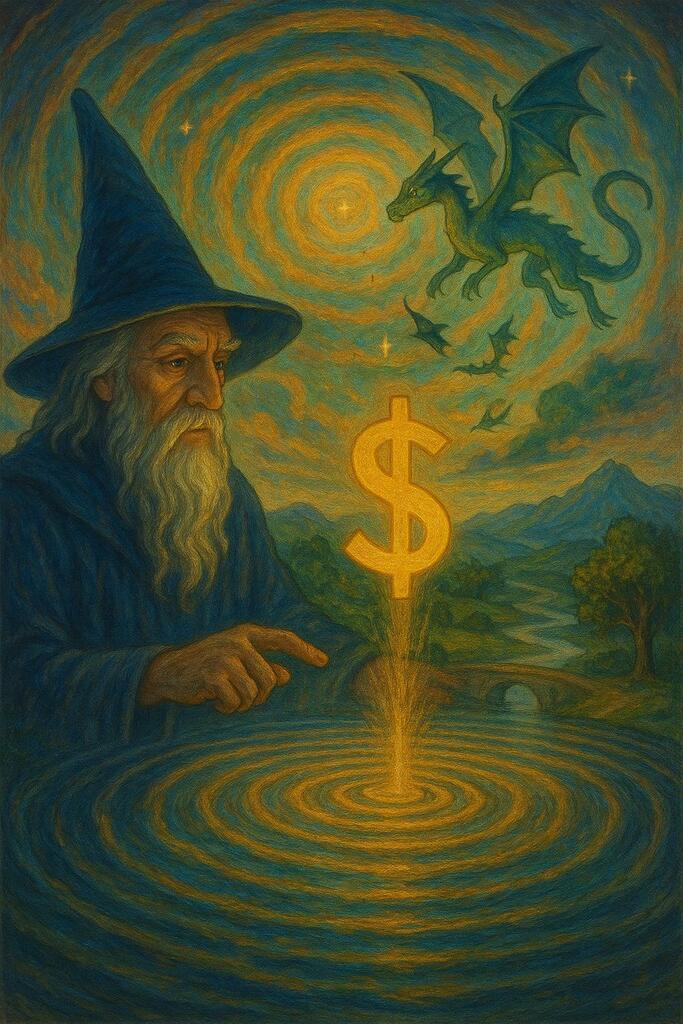
What happens when the Fed announces a rate hike? Grocery lists shrink. Vacation plans get postponed. These everyday choices show how monetary policy ripples through our lives. Central banks now design strategies knowing we’ll react before policies take effect.
Real-World Examples and Policy Adjustments
Take the 2022 inflation surge. The Federal Reserve raised interest rates to cool prices. Traditional models predicted slower spending. But many families cut costs immediately—canceling subscriptions and delaying car purchases. This rapid behavioral shift helped stabilize prices faster than expected.
Tax changes reveal similar patterns. When the 2017 tax cuts passed, some companies didn’t boost investments as hoped. Why? Firms anticipated future reversals and prioritized stock buybacks instead. This mismatch between policy goals and real-world decisions highlights why modern evaluation methods matter.
| Old Approach | New Reality |
|---|---|
| “Cut rates → More borrowing” | “Rate cut rumors → Early refinancing” |
| Fixed spending multipliers | Savings spike if tax hikes loom |
| One-size-fits-all stimulus | Tailored aid based on expectations |
Ever notice gas prices jump before holiday weekends? Stations anticipate higher demand—and adjust prices preemptively. Central banks face similar challenges. Their words now carry as much weight as their actions.
By baking microfoundations into models, policymakers better navigate our ever-changing market. Next time you adjust your budget, remember: Your foresight shapes the economy’s path.
Rational Expectations and Market Behavior
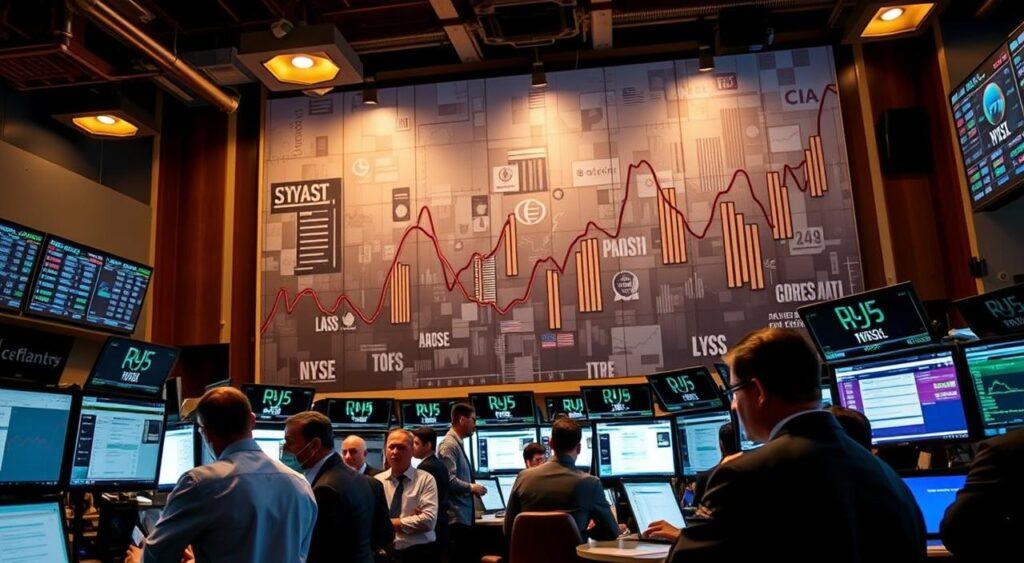
Have you ever noticed gas prices rise days before a holiday weekend? That’s rational expectations in action. People anticipate higher demand—and adjust behavior before the policy or event occurs. This concept sits at the heart of the rational expectations framework, where individuals use all available information to predict outcomes.
Lucas Critique Mental Model: Why Forecasts Shape Reality
Traditional models treated people as passive responders. But modern economics recognizes we’re active predictors. When central banks hint at rate hikes, families might cut spending immediately—not wait for actual changes. This adaptability forces policymakers to think two steps ahead.
Consider how mortgage rates shift. If the Fed signals tighter policy, lenders raise rates preemptively. Borrowers then rush to lock in lower rates. These chain reactions show why equilibrium isn’t fixed—it’s reshaped by collective foresight.
Central Banks Play Chess, Not Checkers
In 2020, the Federal Reserve faced a dilemma. Cutting rates to zero usually spurs borrowing. But with pandemic uncertainty, many saved instead. The Fed adjusted by emphasizing forward guidance—clearly stating plans to keep rates low. This transparency helped stabilize market nerves.
Key lessons emerge:
- Announcements often matter more than actions
- Agents constantly update strategies
- Small expectation shifts create big market waves
Next time you adjust your budget after hearing economic news, remember—you’re part of this dynamic system. Your choices, multiplied by millions, rewrite the rules daily.
The Lucas Critique Model vs Keynesian Approaches
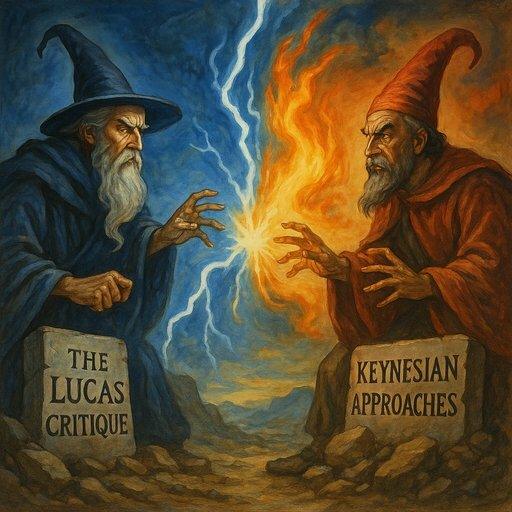
Ever heard economists argue about whether tax cuts boost jobs or inflation? That’s the clash between old-school Keynesian thinking and modern approaches shaped by the Lucas Critique mental model. Traditional models treated the economy like a predictable machine—push a button (like government spending), get a fixed result. But reality? We’re all button-pushers too.
Criticisms of Traditional Keynesian Models
Keynesian economics ruled mid-20th century policy. Its core idea: Governments can smooth economic cycles by adjusting spending and taxes. The models assumed fixed relationships—like how $1 in stimulus creates $1.50 in growth. But these static assumptions crumbled in the 1970s when inflation and unemployment rose together.
Here’s why critics say those models failed:
| Keynesian Approach | Lucas-Informed Approach |
|---|---|
| Uses historical data patterns | Focuses on how expectations alter behavior |
| “People spend windfalls” | “Savings spike if future taxes loom” |
| Treats interest rates as levers | Studies how rate rumors change decisions |
Take the 2008 stimulus checks. Keynesians predicted a spending surge. Instead, many families saved the cash—anticipating job losses. This mismatch shows why ignoring microfoundations (individual choices) leads to flawed forecasts.
Modern models now ask: How will this policy change the rules of the game? When the Fed whispers about rate hikes, markets react within minutes—not months. Ever noticed how gas prices jump before holiday weekends? Same principle.
Have you adjusted your budget based on news headlines? That’s the Critique in action. Yesterday’s economic theories paved the way—but today’s reality demands tools that track our ever-changing expectations.
Advances in Econometric Policy Evaluation
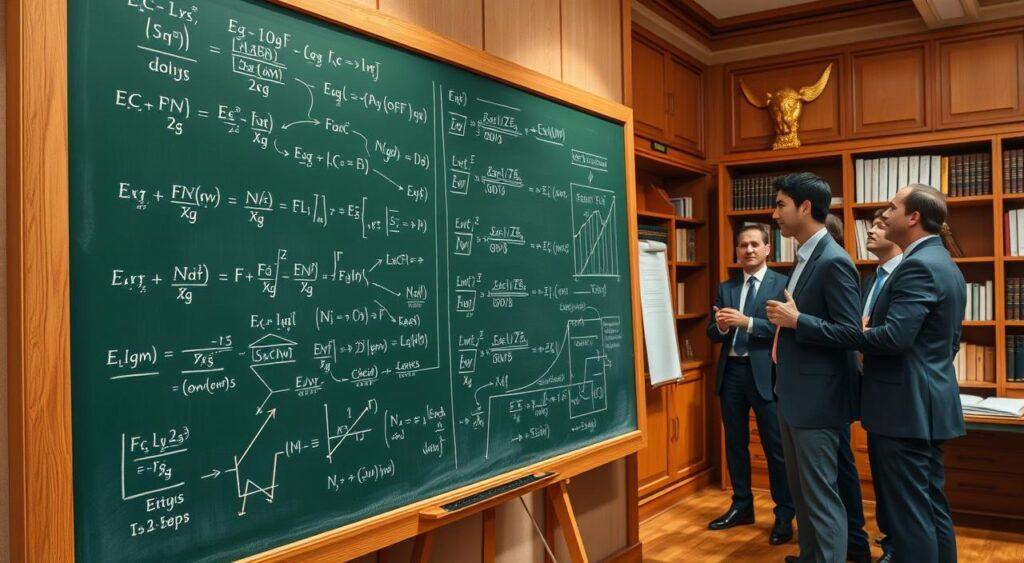
Imagine rebuilding a bridge while cars are still crossing it. That’s what economists faced after the Lucas Critique—old tools couldn’t handle real-world adaptability. Modern policy evaluation now starts with a simple truth: people aren’t robots. They observe, predict, and change course.
Building From the Ground Up
Enter microfoundations—the practice of anchoring models in individual choices. Think of a family deciding whether to spend or save a tax rebate. Older approaches used historical averages. New methods ask: “What information do they have? What future risks do they foresee?”
This shift birthed DSGE models (Dynamic Stochastic General Equilibrium). These frameworks simulate how shocks—like oil price spikes or tech breakthroughs—ripple through an economy. Unlike 1970s models, they assume:
- Workers bargain wages based on inflation forecasts
- Businesses adjust prices anticipating policy changes
- Savers recalculate returns daily
When the Fed tested DSGE models during the 2008 crisis, they revealed why traditional stimulus had limited impact. Households paid down debt instead of spending—a behavioral twist older equations missed.
The Lucas Critique Mental Model: The Limits of Progress
Yet challenges persist. DSGE models struggle with sudden shifts, like cryptocurrency adoption or pandemic buying sprees. During COVID-19, many predicted a V-shaped recovery. Instead, supply chain chaos and changing expectations created lasting inflation.
Does this mean we’re back to square one? Hardly. Each advancement—from incorporating Twitter sentiment to real-time spending data—sharpens our tools. The key lesson? Economic evaluation isn’t about finding perfect answers. It’s about asking better questions as the bridge beneath us keeps evolving.
Debates and Challenges in Modern Macroeconomic Modelling
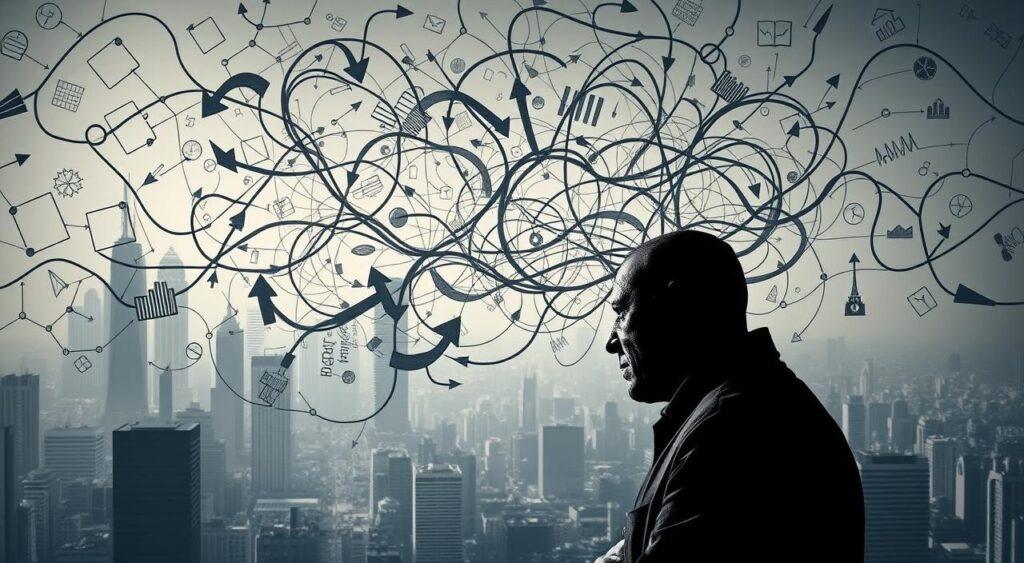
How often do economic forecasts miss the mark? Despite supercomputers and AI, experts still struggle to predict recessions or inflation spikes. The core problem remains: human behavior evolves faster than models can adapt.
Lucas Critique Mental Model: Technological and Theoretical Limitations
Even advanced tools like DSGE models face hurdles. They struggled during the 2008 crisis, failing to anticipate how households would prioritize debt repayment over spending. Similarly, many frameworks missed COVID-19’s supply chain shocks and their impact on inflation.
Here’s why modern analysis still grapples with old issues:
| Challenge | Traditional Approach | Modern Reality |
|---|---|---|
| Predicting unemployment | Relied on Phillips Curve | Ignores gig economy shifts |
| Interest rate effects | Assumed fixed relationships | Cryptocurrencies alter responses |
| Policy rollout | Tested historical data | TikTok trends sway expectations |
Debates rage among economists. Some argue we need more microfoundations—detailed studies of how individuals make choices. Others push for AI-driven models that track real-time spending data.
Remember the 2021 inflation surge? Many experts blamed temporary factors. When prices kept rising, agents adjusted their strategies—hoarding goods or demanding raises. This created a spiral no model fully anticipated.
Does this mean forecasting is futile? Not at all. It simply reminds us that every breakthrough reveals new layers of complexity. As one Fed researcher quipped: “We’re not building crystal balls—we’re mapping ever-shifting terrain.”
Conclusion
Economics isn’t just about numbers—it’s about how we adapt to change. The Lucas Critique mental model taught us that fixed formulas fail when real people rewrite the rules. Traditional models assumed taxes or interest rates worked like buttons on a machine. Now we know better: every policy shift alters what happens next.
Modern tools like DSGE frameworks bake human foresight into their math. They track how families save when they fear future taxes, or why companies pause hiring before rate hikes. This focus on microfoundations—the small choices shaping big systems—helps explain why some plans succeed while others backfire.
Key lessons stand out:
- Economic relationships aren’t fixed—they evolve with our expectations
- Policy evaluation must account for how announcements change behavior
- Yesterday’s data can’t predict tomorrow’s decisions
Challenges remain. Cryptocurrencies, gig work, and viral trends keep reshaping the market. Yet each breakthrough—from real-time spending data to AI analysis—brings us closer to understanding this dynamic puzzle.
What economic puzzle will you solve next? Share your thoughts below—the conversation never stops evolving, just like the systems we study.
